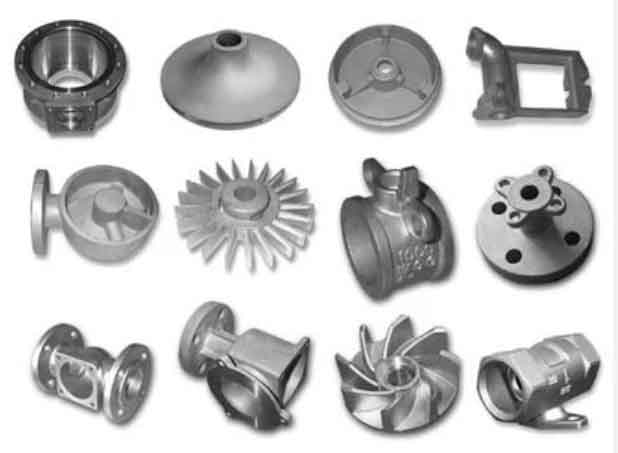
This paper presents a comprehensive methodology for producing high-quality ductile iron casting components, specifically focusing on automotive brake calipers. The process integrates computational simulation with practical foundry techniques to achieve superior mechanical properties and production efficiency.
1. Component Specifications and Requirements
The brake caliper casting, made of QT450-10 grade ductile iron, weighs 3.02 kg with dimensions 185 mm × 74 mm × 163 mm. Key requirements include:
| Property | Requirement |
|---|---|
| Tensile Strength | ≥450 MPa |
| Yield Strength | ≥280 MPa |
| Elongation | ≥10% |
| Hardness | 143-217 HBW |
| Nodularity | ≥80% |
2. Process Design Fundamentals
The casting layout optimization increased production efficiency by 19% through strategic orientation adjustments. The modulus calculation forms the basis for riser design:
$$ M = \frac{V}{S} $$
Where:
$M$ = Modulus (mm)
$V$ = Volume (mm³)
$S$ = Cooling surface area (mm²)
| Component | Modulus (mm) |
|---|---|
| Casting Body | 5.27 |
| Hot Spot | 5.90 |
| Riser | 7.67 |
3. Gating System Design
The semi-pressurized gating system follows the ratio:
$$ \Sigma F_{sprue} : \Sigma F_{runner} : \Sigma F_{gate} = 1 : 0.7 : 1.2 $$
| Element | Cross-section (mm²) |
|---|---|
| Sprue | 500 |
| Runner | 350 |
| Gate | 600 |
4. Metallurgical Control
Chemical composition management is critical for achieving desired ductile iron casting properties:
| Element | Base Iron | Final |
|---|---|---|
| C | 3.80-3.85 | 3.74-3.80 |
| Si | 2.00-2.10 | 2.74-2.81 |
| Mgres | – | 0.040-0.050 |
The nodularization process uses cored-wire injection with parameters:
$$ t_{react} = \frac{L_{wire}}{v_{wire}} + \Delta t_{slag} $$
Where:
$t_{react}$ = Total reaction time (s)
$L_{wire}$ = Wire length (m)
$v_{wire}$ = Feed speed (m/min)
5. Quality Assurance
Three-stage inoculation ensures proper graphite formation in ductile iron casting:
- Primary: 0.2% BaSiFe (2.6-4.5 mm)
- Secondary: 0.3% BaSiFe (0.6-2.5 mm)
- Tertiary: 3 g/s BaSiFe (0.2-0.5 mm)
| Sample | UTS (MPa) | YS (MPa) | Elongation (%) |
|---|---|---|---|
| 1 | 476 | 336 | 15.6 |
| 2 | 479 | 331 | 13.3 |
| 3 | 485 | 327 | 13.3 |
6. Process Validation
Numerical simulation using MAGMA software confirmed:
- Filling time: 8 seconds
- No isolated liquid zones
- Temperature gradient ≤ 25°C/cm
The optimized ductile iron casting process achieves:
- 61.6% yield improvement
- Total defect rate < 1.9%
- Production rate: 6 castings/mold
7. Industrial Implementation
Key production parameters for ductile iron casting:
| Parameter | Value |
|---|---|
| Pouring Temperature | 1,400-1,360°C |
| Molding Sand Moisture | 3.2-3.4% |
| Cooling Rate | 30-50°C/min |
This methodology demonstrates that systematic optimization of ductile iron casting processes can simultaneously enhance mechanical properties, production efficiency, and quality consistency in automotive component manufacturing.
